Virtual Reality Content
 Tuesday, April 15, 2014 at 11:27PM
Tuesday, April 15, 2014 at 11:27PM 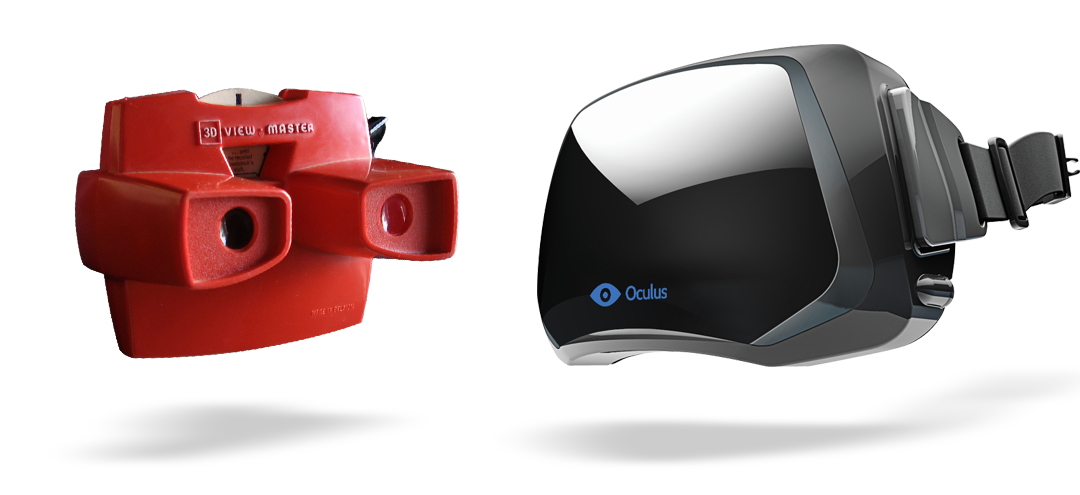

Having an Oculus Rift, the easiest source of viewable (non-gaming) content is YouTube. Anecdotally, it appeared to me that the content available has been growing. I wanted a way to measure this growth. YouTube does not have tools for date range searching. But Google does. And using the “site:” operator, Google can also do domain specific searches. So I used Google to search YouTube by date, and graphed three of these search terms over time. The results are shown below.
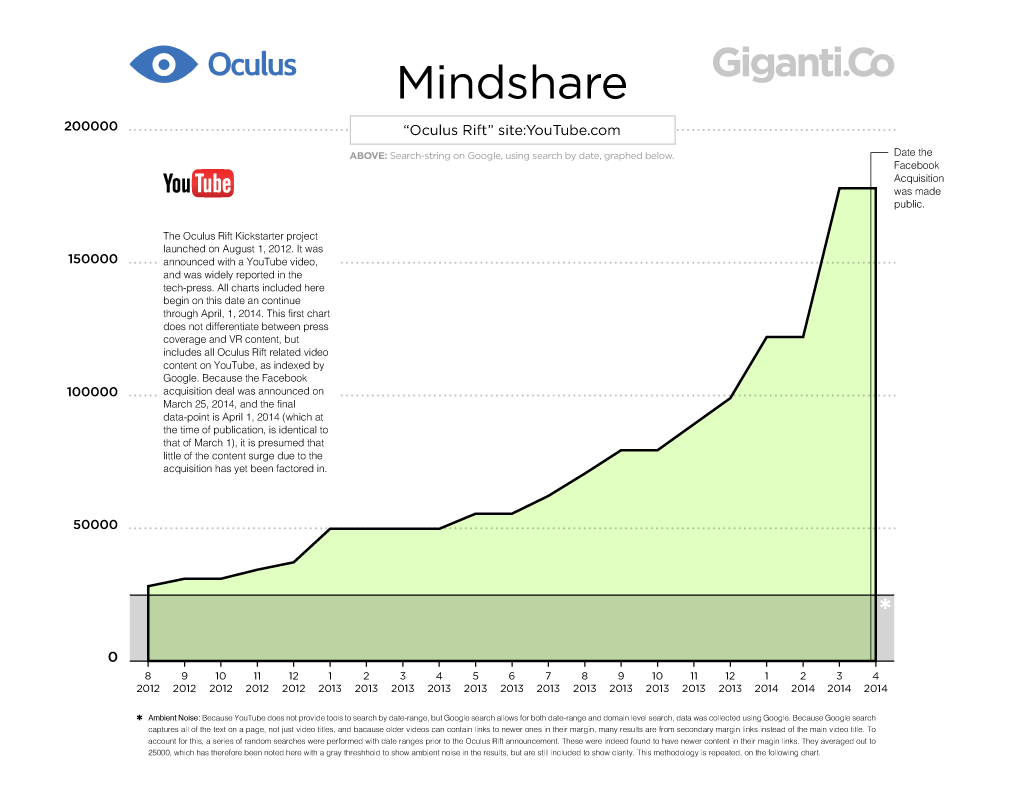
| User Reaction Video: |
Graph 1: Mindshare |
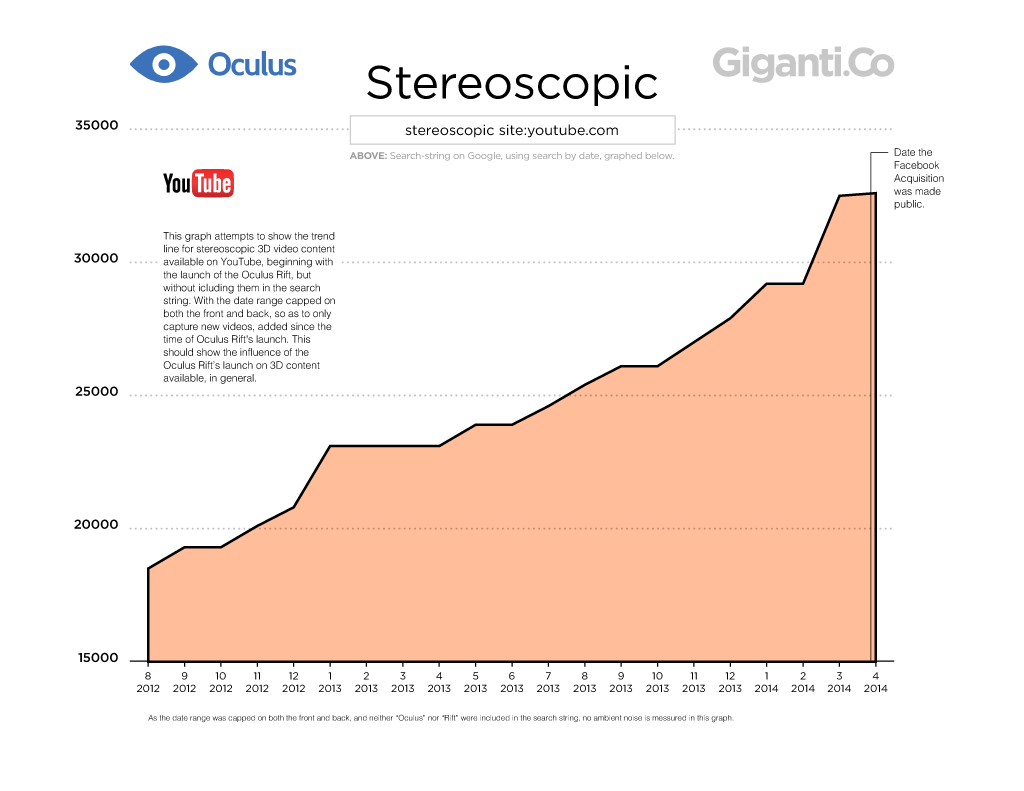
Stereoscopic non-Oculus: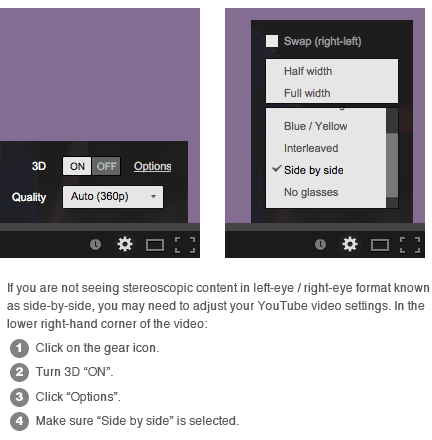
|
Graph 2: Stereoscopic The content at left, while true stereoscopic 3D of Shakira’s Waka Waka, performed live, it however is not compatible with the Oculus Rift, as it does not accommodate for the Rift’s “barrel distortion” required for the Rift’s optics (an innovation which is largely responsible for the Rift’s extremely wide field of view). |
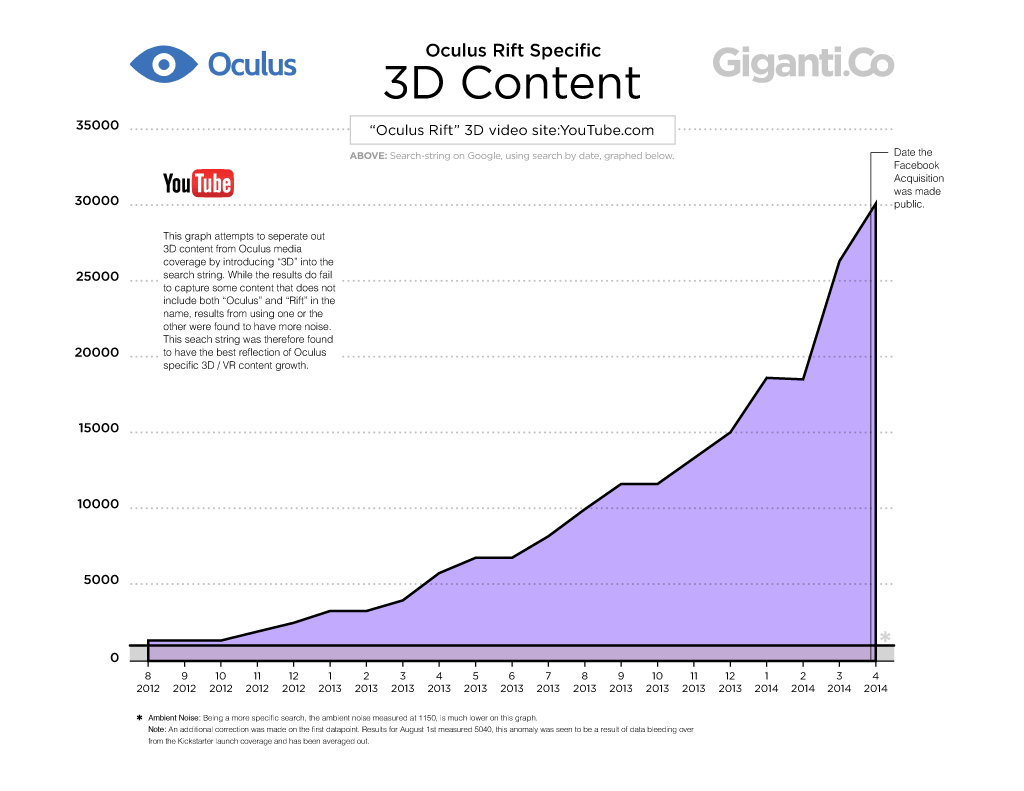
| Rift Specific 3D Video: |
Graph 3: only Oculus Rift 3D videos |
 I’m going to go out on a limb and suggest that non-game VR content will be as popular with the Rift, if not more so, than its use as a gaming device. Part of this is personal experience — I am not a gamer, but a longtime virtual reality advocate. I don’t think I’m alone. The truth is most people are not gamers. When I say gamers, I’m referring to the immersive first-person-shooters that headsets like the Oculus Rift are presumed to be targeted at. I have written about this already from the perspective of the Facebook acquisition, but I wanted to explore this notion further, from the perspective of a user.
I’m going to go out on a limb and suggest that non-game VR content will be as popular with the Rift, if not more so, than its use as a gaming device. Part of this is personal experience — I am not a gamer, but a longtime virtual reality advocate. I don’t think I’m alone. The truth is most people are not gamers. When I say gamers, I’m referring to the immersive first-person-shooters that headsets like the Oculus Rift are presumed to be targeted at. I have written about this already from the perspective of the Facebook acquisition, but I wanted to explore this notion further, from the perspective of a user.
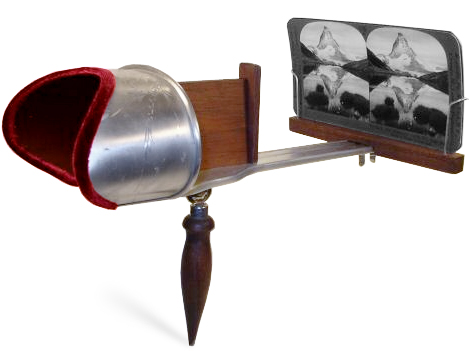 Long before 3D IMAX movies, there were stereoscopes. My grandmother had a pair when I was a child. She kept them with a basket full of 3D photos beside her chair in the living room. Over the years, the View-Master (shown with Oculus Rift atop page) has enjoyed a near century-long run, surviving multiple acquisitions, now a sub-brand of Mattel subsidiary Fisher-Price, will celebrate its centennial in 2019. While I’ve not been successful in running down actual year-over-year production numbers of View-Master content for this story, according to Mary Ann & Wolfgang Sell and Charley Van Pelt’s comprehensive history of View-Master, “View-Master Memories,” places View-Master content production runs into the billions. There is pent-up-demand for non-gaming 3D content in virtual tourism and virtual experiences waiting to be unleashed.
Long before 3D IMAX movies, there were stereoscopes. My grandmother had a pair when I was a child. She kept them with a basket full of 3D photos beside her chair in the living room. Over the years, the View-Master (shown with Oculus Rift atop page) has enjoyed a near century-long run, surviving multiple acquisitions, now a sub-brand of Mattel subsidiary Fisher-Price, will celebrate its centennial in 2019. While I’ve not been successful in running down actual year-over-year production numbers of View-Master content for this story, according to Mary Ann & Wolfgang Sell and Charley Van Pelt’s comprehensive history of View-Master, “View-Master Memories,” places View-Master content production runs into the billions. There is pent-up-demand for non-gaming 3D content in virtual tourism and virtual experiences waiting to be unleashed.
Professional Content is Coming
Anecdotally, I’ve seen VR-ready 3D video studios rapidly springing up, the likes of TotalCinema360, Jaunt, Next3D, Polygon Window Productions and others. Unlike the YouTube content that, by YouTube’s limitations, is fixed perspective, these studios’ produce content viewable in full head-tracking 360° 3D.
NSFW
The adult entertainment industry has long been an early-indicator and driver of technology platform adoption. The case-study of reference as always, being the industry’s embrace of the VHS format, where in 1980 adult titles accounted for over half of all VHS titles, and where Sony refused to license it’s Betamax format for adult content and lost the format wars. Snickers aside, adult content as a technology driver cannot be ignored. Readers can do their own Google search. Safe to say, the adult entertainment industry’s embrace of the Oculus Rift is as strong as it is unreported.
Mirror Worlds and Virtual Tourism
One of the more fascinating Oculus Rift experiments I’ve seen involves hacking Google Maps. Thus far, it can only execute stills, but in time, expect this kind of implementation to go real time, full streaming, in 360°. How might Google build that, you may ask? It takes two to Tango.
Conclusions
Based on the trajectory shown in the charts above, online 3D content is set to soar. Most high-quality, pro-sumer grade 3D video content made today is being done by coupling a pair of GoPro Cameras. These cameras are limiting, as they are fixed-position and therefore not able to make use of the Oculus Rift’s head tracking capabilities. In order to fully capitalize on this platform, purpose-made stereoscopic camera hardware will need to make its way onto the consumer market. On Facebook’s part, they need to find room on their platform to accommodate 3D content. Improving the platform’s video search capabilities would also be a good place to start.

